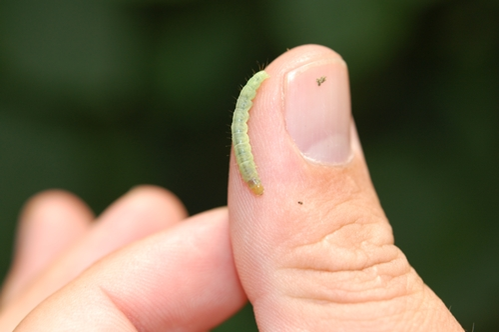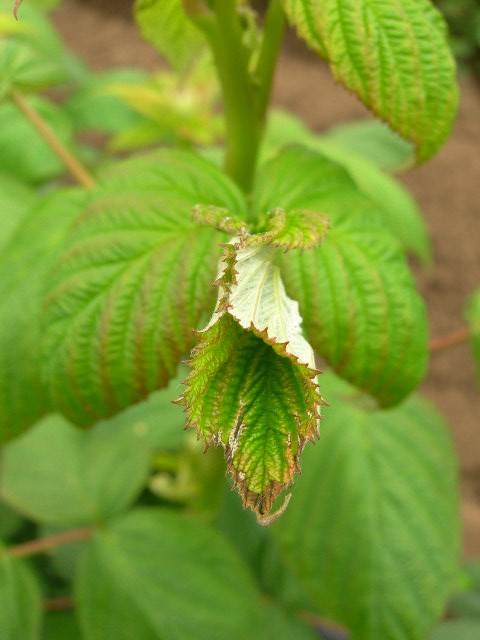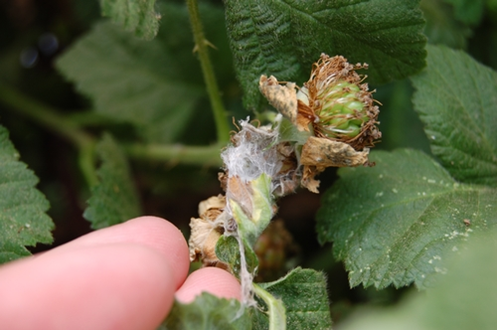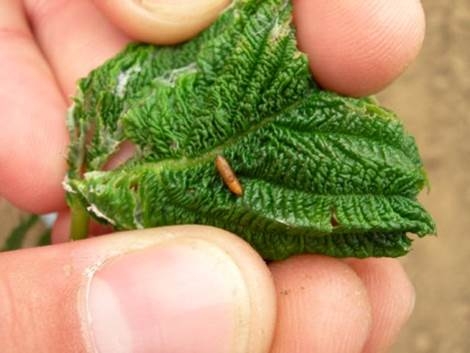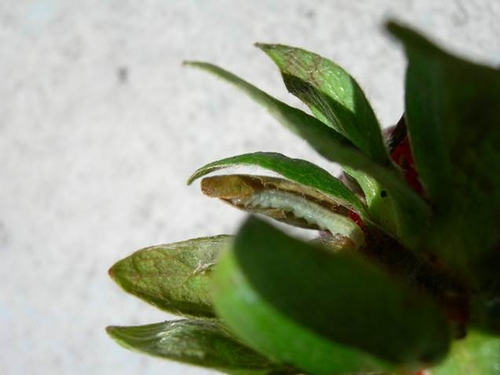Growers need to be aware right now that our light brown apple moth (LBAM) issue on the Central Coast has been getting very serious. Initially receiving my first texted picture in late March (yes, you are the first!), the issue has now morphed into a number of fields having finds this past week, even with one larval find in fruit harvested out of a conventional strawberry field.
The uninitiated should know that LBAM, while not generally representing a pest problem, is nonetheless deadly serious business. The bottom line is that our trading partners in Canada, Mexico and the southeastern USA don't want it, and are depending on the regulatory machinery in California to keep it out. And the regulatory activity around an LBAM find is stressful, expensive and time consuming - just ask anybody who has gone through the process from a find to finally clearing the field.
There is a lot of material on the UC IPM guidelines and this blog on how to deal with the regulations and how to effectively manage this pest, but I want to re-iterate how important it is to regularly survey one's field, to which end I've provided a few pictures below from my collection to assist. LBAM is a leafroller and looks very similar to several others we have here at the larval stage, so concentrating on leafroller management in the berries is the name of the game.
On management, an identified population of LBAM should be pursued in three ways
1- The use of mating disruption obtained by the deployment of pheromone based twist ties. These are no longer available from the County Agricultural Commissioners, but you can get them from Troy Miller at 831 809 9211.
2- Judicious use of insecticides targeted to lepidoperous pests. Formulations of Bt can be added to any other tank mix, Coragen (for strawberries), Altacor (for caneberries), Delegate (for caneberries), Radiant (for strawberries) and Intrepid are all good, some act faster than others. Understand that before using any insecticide, one needs to check the label for use restrictions and recommendations.
3- Physical removal of the leaf rolls works. One should realize that the number of rolls in a field is generally not very high, but a single worm in this regulatory regime can be ruinous. GET THEM OUT. Also, understand that looking for LBAM larvae is unlike Easter egg hunting with eggs spread evenly across a physical space, but instead since the larvae emerge from egg clutches, tend to be bunched up around one another. Find one, and maybe you find a few more.
Finally, please understand that because of the massive cost a closure can bring to an operation, this is a very high priority issue for me. By all means let me know if you want me to pay a visit to your farm and discuss this LBAM problem further.
Attached Images:
